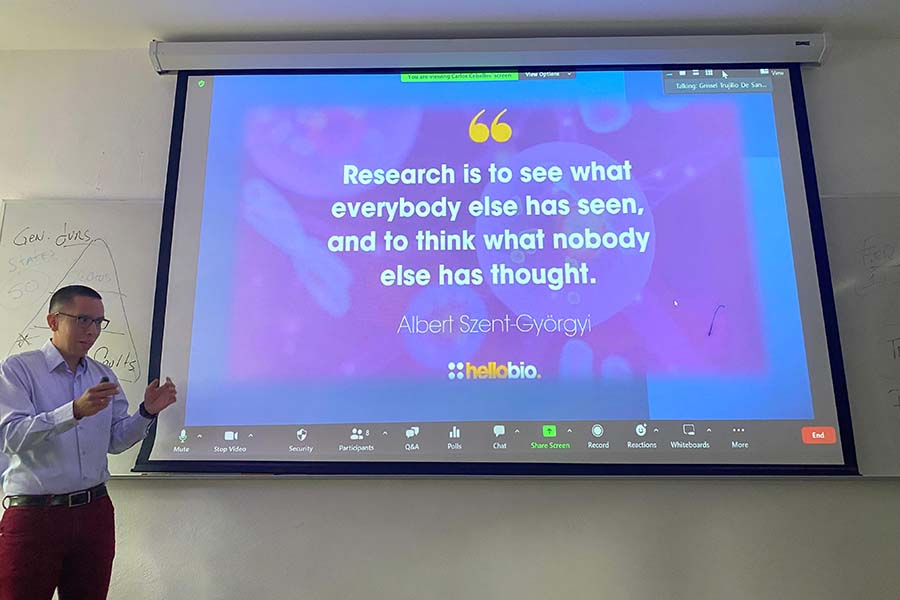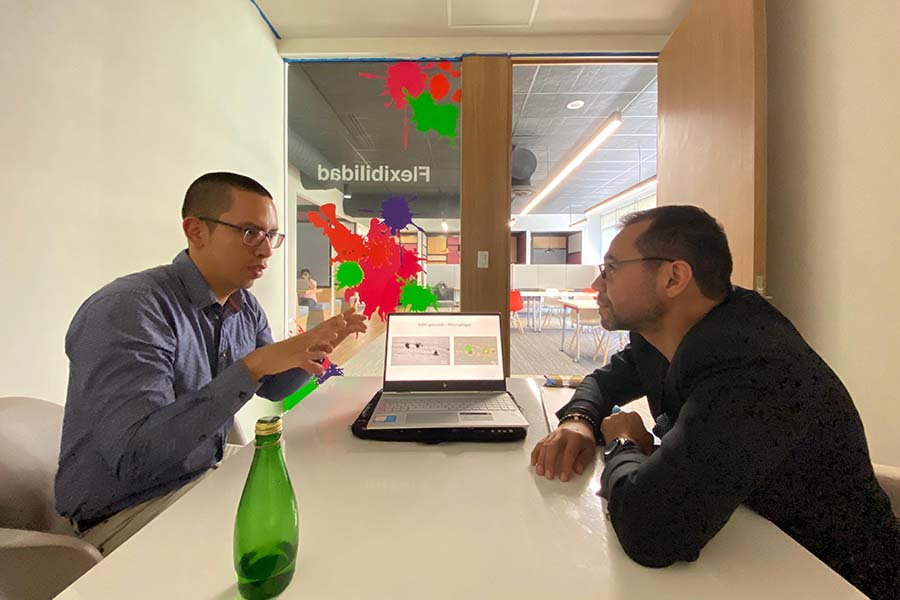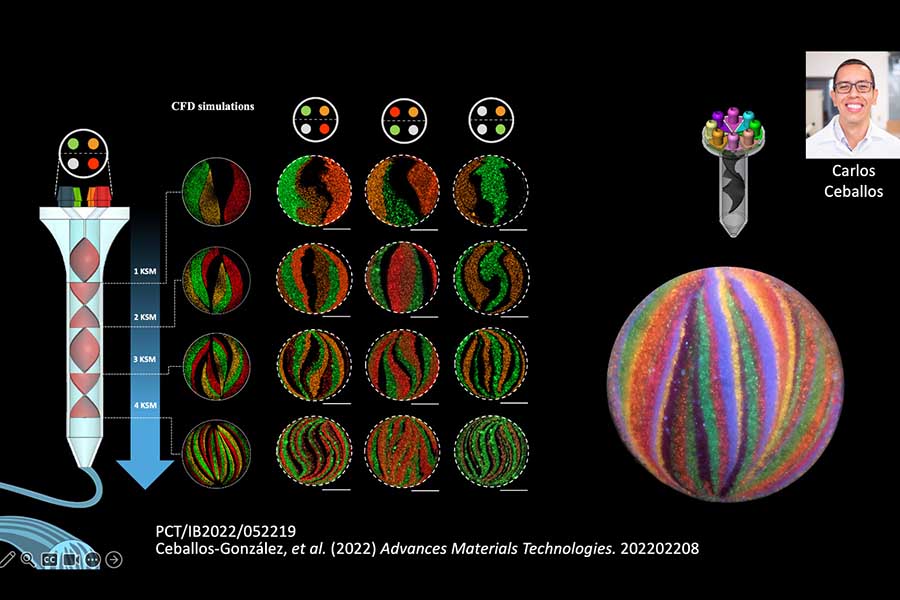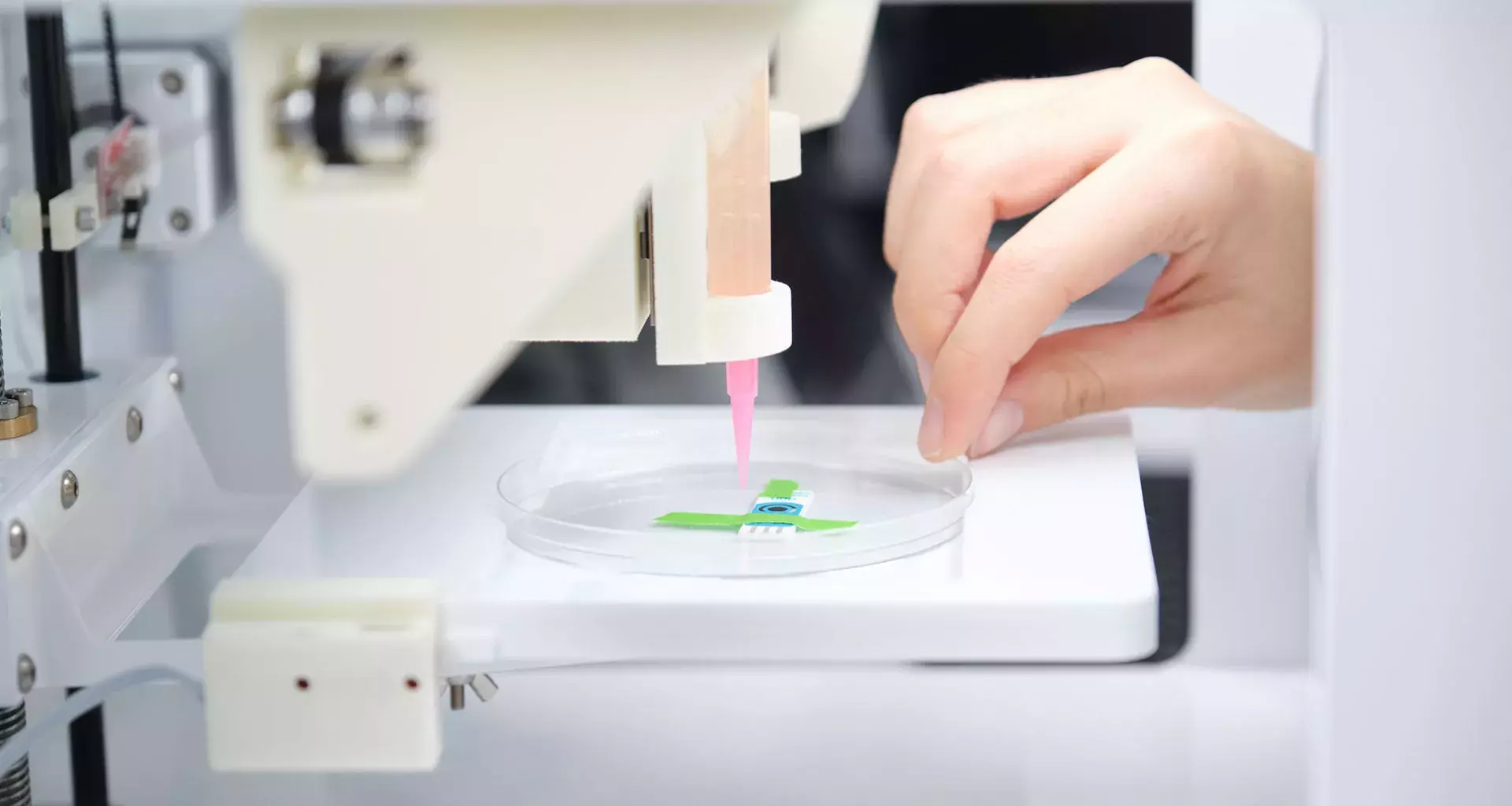Tec graduate Carlos Ceballos, who holds a PhD in Biotechnology, has been recognized with the Weizmann Prize for his research on chaotic bioprinting of cancerous tissues to create 3D models for testing more effective therapies.
Ceballos received the award, considered the most important distinction a doctoral dissertation can receive in Mexico, from the Mexican Academy of Sciences (AMC).
While studying at the Tec’s School of Engineering and Sciences, he was part of the Álvarez-Trujillo Lab, having Dr. Mario Álvarez and Dr. Grissel Trujillo as his dissertation advisors.
“Although the advances in Carlos’ research could streamline drug testing, they also open the door to future applications in personalized medicine,” says Trujillo.

Chaotic printing in the quest to fight cancer
With previous training in microbiology, Ceballos joined Dr. Trujillo and Dr. Álvarez’s research team at Tec de Monterrey as a master’s student.
“I was very eager to go to the Tec because it’s an institution that’s renowned worldwide,” he says.
His master’s research focused on the study of different types of bacteria and their coexistence within a single structure.
Subsequently, he pursued his doctorate with the same research team, working on chaotic bioprinting of cancerous tissues at the Álvarez-Trujillo Lab.
Using this type of printing, he created flows of injected viscous materials to create structures similar to those of human tissues, explains Ceballos.
He acknowledges that manipulating something as small as a cell – about 20 micrometers in size – was a challenge, but this technique made it possible to organize different types of particles or microorganisms with great precision.
The idea was proposed by his advisor Mario Álvarez. Despite the significant challenge it represented from the start, he decided to give it a try.

Promising results for developing effective cancer treatments
The team led by Ceballos developed a cylindrical structure with internal channels, similar to train tracks through a hollow noodle, designed to guide microscopic fluids.
When they introduced cancer cells into the structure, they observed a phenomenon they described as surprising: the cells migrated through the channels as if they were biological corridors. Moreover, the longer they remained in the structure, the more they spread throughout it.
Ceballos points out that the result of this was a migration rate so high that, to date, no other study in the world has reproduced it.
“This work represents perhaps the most aggressive migration that’s been reported in scientific papers so far. We’re the first to achieve this,” Ceballos says.
The researcher believes that this result enables better modeling of the metastasis process, which could contribute to the development of more effective treatments to halt the spread of cancer.
In addition to cylindrical filaments, Ceballos and his team explored new applications of chaotic printing, developing spherical structures capable of housing different types of cells, such as fibroblasts and cancer cells.
Fibroblasts, cells found in connective tissues, play a crucial role in the development of cancer since malignant cells recruit them to aid in their growth and facilitate their migration and proliferation.
When comparing isolated cancer cells with those placed inside spheres with fibroblasts, they observed a different response to anticancer treatments.
This confirms the importance of studying cancer in environments that better reflect the actual cellular interaction within the body, says Ceballos.

Future applications: More personalized medicine
He said that conventional drug development processes usually only perform tests on an isolated cell model, omitting the influence of other cells that could enhance or inhibit the effect of the drug.
The researcher points out that including more cell types in three-dimensional models makes it possible to obtain more representative results and to more accurately predict a patient’s response to a treatment.
“Instead of conducting simplified assays with a single cell type, we’ll be able to more accurately predict the efficacy of a treatment if we use three-dimensional structures with cells relevant to a particular tissue,” he explains.
Statistics show that many cancer patients suffer the adverse effects of multiple drugs before a suitable treatment is found.
Integrating three-dimensional models into cancer research could speed up the identification of personalized therapies, reducing the impact of ineffective treatments.
“Today’s goal of using 3D models is to find the right treatment for each patient,” he says.
Ceballos is currently at the University of Cambridge, collaborating with leading researchers in tissue engineering while also continuing his work at the Álvarez-Trujillo Lab.
In addition, he is co-author of two patents pending before the United States Patent Office, based on the findings obtained in his doctoral dissertation
About the AMC and the Weizmann Prize
The Mexican Academy of Sciences (AMC) is an independent, non-profit civil organization that brings together leading scientists from various institutions in Mexico and abroad. Its mission is to promote scientific research in the country.
This organization, together with the Mexican Association of Friends of the Weizmann Institute of Sciences, awards prizes to the best doctoral dissertations in engineering and technology completed in Mexico.
These distinctions are awarded to male researchers under the age of 35 and female researchers under the age of 38.
“It’s the most important award a PhD student can receive in Mexico. You have to submit an essay with your dissertation’s contributions to scientific knowledge,” Ceballos says.
“That’s the toughest part. You need to persuade the best scientists in Mexico that your work was truly worthwhile,” the winning Tec graduate concludes.
YOU MAY ALSO BE INTERESTED IN READING:





